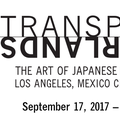“When my two sisters and I were younger, we lived in my maternal grandparents’ home in Tokyo....In those summer months, we could hardly wait to finish supper so that we could put on our yukata and run outdoors to participate in the folk dance practice sessions for the Obon Odori festival....All three sisters wore fabric with the same design motif because our three yukata were made out of two bolts of cloth. We needed Grandmother Tsuru’s help to put on our freshly laundered and heavily starched outfits. She separated the sleeves and the bodices in order for us to get into those crisp robes. We each wore a brightly colored, soft silk sash, called a heko-obi, which was always decorated with gay shibori patterns. As I ran toward the plaza in the warm evening air, I could hear the rustling sound of my long, stiffly starched sleeves swinging through the air beside me. “
— excerpt from essay, “Changing Attitudes Toward the Kimono: A Personal Reflection”
Yoshiko I. Wada, 1996
These vivid memories of childhood belong to Yoshiko Iwamoto Wada, artist, kimono expert, and textile art historian. Wada is an accomplished culture advocate who has lectured widely in the United States, Japan and other continents, and curated numerous groundbreaking exhibitions on traditional and contemporary textiles. Since she was a child, Wada has been deeply enamoured with the varied textures and dimensions of cloth and costume, of both Japanese and European influence. Her passion for textiles has direct roots to her own family.
Wada’s maternal grandmother, Tsuru, came from a family of kimono makers in Tokyo (Two branches of Tsuru’s family, noted for their expert yuzen dyeing and embroidery, are still acclaimed for their fine kimonos), and is responsible for passing on much of the kimono culture that Wada has retained. Her paternal grandmother, Motoko, who through experiences of living in Europe with her husband in the early 1920s, learned the skills of European dressmaking, millinery, macrame, embroidery, and fabric flower making, which she later applied by opening a dressmaking school in Tokyo that introduced innovative designs and fashions from Europe to Japan from the late 1920s until 1955.
Motoko took a young Yoshiko under her wing, and nurtured her love and knowledge of European art. She continued her study of art, but in textiles, at the Kyoto City Fine Arts University, before moving to the United States to complete her art education in painting and drawing at the University of Colorado in Boulder. Postgraduate study included apprenticeships in traditional Japanese silk embroidery at the Daihiko studio in Tokyo, and Ikat weaving and indigo dyeing at the workshop of T. Odani in Kyoto. Much of Wada’s textile art is a combination of the rigorous techniques, the cultural values and history she’s retained from her life in Japan (traced all the way back to her grandmothers) with the life she’s lived in the United States. Her own work is lined with wit and memory: one kimono is dyed with the script of the familiar Coca-Cola logo (she deliberately seeks out cultural symbols that are both common and meaningful), another installation piece is draped with the mosquito netting of her youth.
Through her international work in the field of textile arts, Wada has emerged as a leading scholar and expert on the subject of shibori, kasuri, and kimono. In 1975, she co-founded Kasuri Dyeworks, a gallery and shop in Berkeley that specializes in Japanese textiles, art supplies and folk crafts. She is a twice-recipient of the Japan Foundation fellowship, one which later gave birth to the World Shibori Network, (of which Wada is now vice-president of), which hosts international symposiums, organizes exhibitions and research projects, and preserves and promotes the art and craft of shibori. Other recent honors include a 1998-99 Matsushita International Foundation Grant to study Pre-Columbian textiles, working as a Visiting Scholar at the Center for Japanese Studies at the University of California, Berkeley, and as a Renwick American Craft Fellow at the Smithsonian Institution. She has chaired three symposium; the first in 1992 at Nagoya, the second in 1997 at Ahmedabad, India, and the most recent one in 1999 at Santiago, Chile.
According to Wada, shibori means “a variety of ways of embellishing textiles by shaping cloth and securing it before dying. It is a process of manipulating fabric. The word comes from the verb root shiboru (to wring, squeeze, press).” The results of these dyeing techniques is both dimensional and tactile. Wada emphasizes the “memory” of cloth, which sensitively records and retains the shape, the type of resist and the amount of pressure exerted by thread or clamp in the dyeing process. One can perceive rings of indigo on the cloth as if they were starbursts floating on a blue-black sky. Like nature’s snowflakes, no two are alike.
* * *
Yoshiko Wada is an accomplished writer on the subject of textile art, having co-authored and co-edited several definitive books on Japanese textile arts, with two more books currently in the works.
* * *
Reference:
The Kimono Inspiration: Art and Art to Wear in America, co-edited with Rebecca Stevens and co-authored with Nancy Corwin, Julie Schafler Dale. Pomogranate Artbooks, Rohnert Park, and the Textile Museum, Washington D.C. 1996
Shibori:The Inventive Art of Japanese Shaped Resist Dyeing, co-authored with Mary Rice and Jane Barton. Kodansha International, 1999 (9th edition), Japan
Ikat: An Introduction, co-authored with Diane Ritch, Kasuri Dyeworks, 1973. Rev. 1975. USA. Reprinted 1982, Kelvin Grove College of Advanced Education, Brisbane, Australia
Memory on Cloth: Shibori Now, Kodansha International, Anticipated publication date: Spring 2002
Meisen Textile Production and Women Consumers in the First Half of the Twentieth Century Japan
Welcome to the 21st century.
* This article was originally published in Nikkei Heritage Vol. IX, Number 1 (Winter 2002), a journal of the National Japanese American Historical Society.
© 2002 Patricia Wakida






